Garden Scale Structures Using Coroplast:
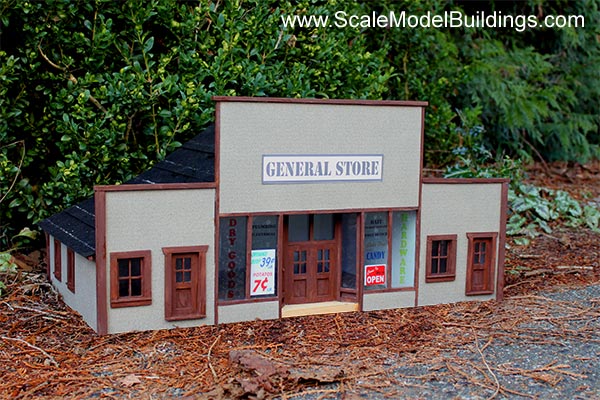 |
Creating a structure for a Garden Scale model railroad presents a few challenges not shared by builders of smaller scales. For one thing, projects are considerably larger and take up more space during construction. Storage and handling of materials can also take up more space. The main consideration, however, is that the buildings have to withstand the elements, so some of the typical modeling materials aren't suitable. On the other hand, the fact that you are working in 1:24 or 1:29, scales that are almost seven times larger than N Scale and almost four times larger than HO scale, some of the construction operations are less challenging, and you can be very creative in your choice and application of materials. |
 |
Getting Started:ScaleModelBuildings.com plan packages allow you to follow either of two procedures in going about building your model. One option is to follow the actual finished dimensions from the scaled plans, as you would do in building a real house. The other method is to print out the actual-size templates and trace directly onto the building materials. This tutorial follows the first option in constructing Plan 1200g, Watson's Store, in 1:24 Garden Scale, and will use Coroplast corrugated plastic sheet as the main building material. |
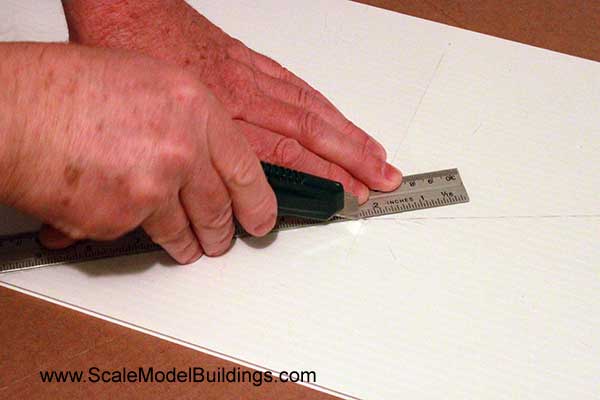 |
The material comes in 4 x 8 sheets, like plywood. The good people at PlasticWorks were kind enough to cut it in half for me so I could fit it into my car, but if worse came to worst you could always take a knife and straightedge with you and cut it on the spot. Coroplast comes in a variety of colors, is lightweight, waterproof, and cuts easily with a utility knife. It can also be painted. Use a straight edge as a guide and make a series of light cuts rather than trying to cut through in one pass. |
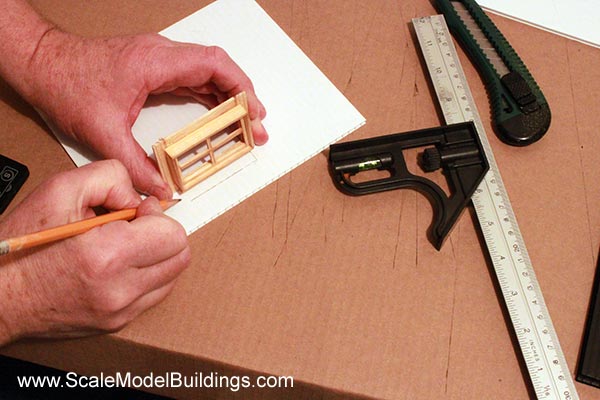 |
After the window locations are established you can use the windows to mark off the size of the openings. |
 |
You can cut the window openings easily with a utility knife and a straight edge. Use an X-acto knife for the corners. |
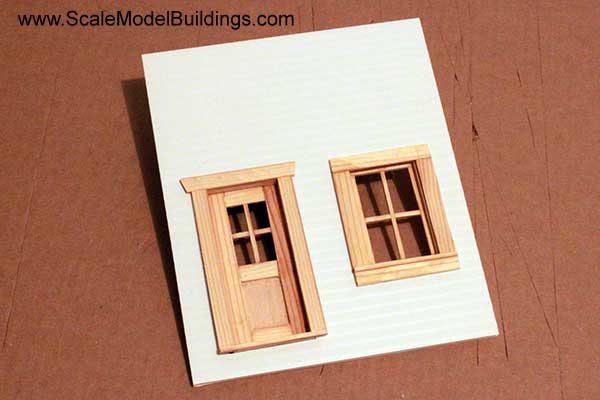 |
It's best to test fit the windows and doors before assembling the structure. The doors and windows for this project were constructed using the procedures described in the Making Your Own Garden Scale Windows & Doors tutorial. |
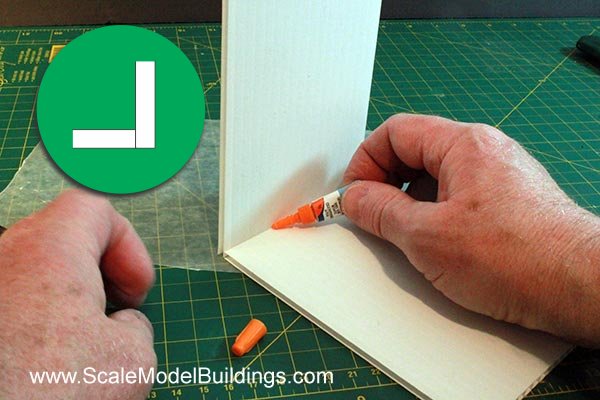 |
Walls can be temporarily attached using Cyanoacrylate glue. This example uses a butt-joint, one of the most common and simple methods of construction. The dis-advantage of a butt-joint is that is leaves an exposed edge, but this can be addressed later. |
|
|
|
 |
Masking tape can be used to hold pieces together while gluing. The masking tape can easily be removed without leaving a mark on the plastic. |
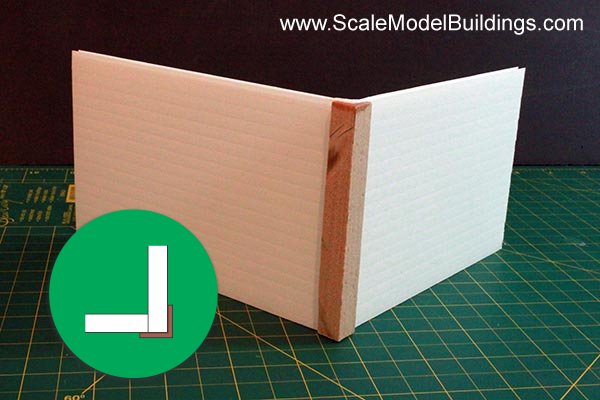 |
This example uses outside corner moulding from a building supply store.
The 3/4" corner moulding was re-sawn using a table saw to bring it down to a more realistic dimension. Using this method of corner treatment has the added advantage of providing reinforcement as well as hiding the exposed joint. |
|
|
|
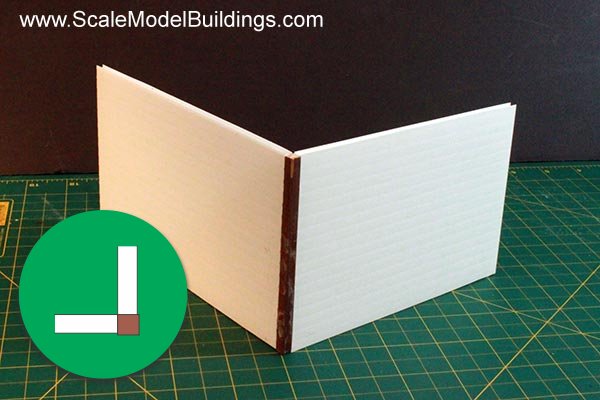 |
Another assembly technique is to use a simulated corner board. 5/16" x 5/16" material re-sawn on a table saw will provide a slight shoulder to hide the exposed edges of the Coroplast. Epoxy glue can be used to fasten the edges of the Coroplast to the corner board. |
|
|
|
|
|
Regardless of which method is used to fasten the walls, silicone sealant or similar caulking should be used on the inside to increase the strength of the joints. |
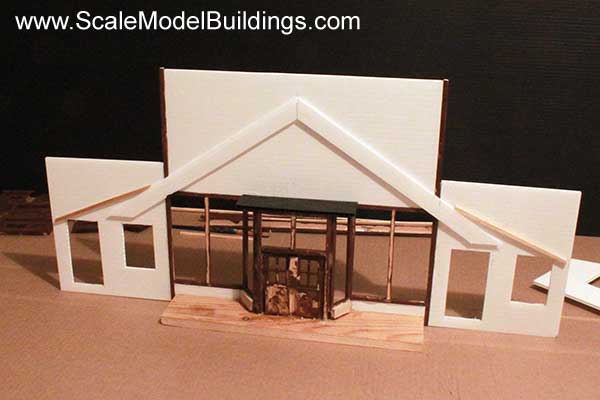 |
The main storefront windows are framed in with 1/4" x 1/4" material. The diagonal strips of material are used to support the roof panels. In this case, the back wall was traced to provide the correct slope. |
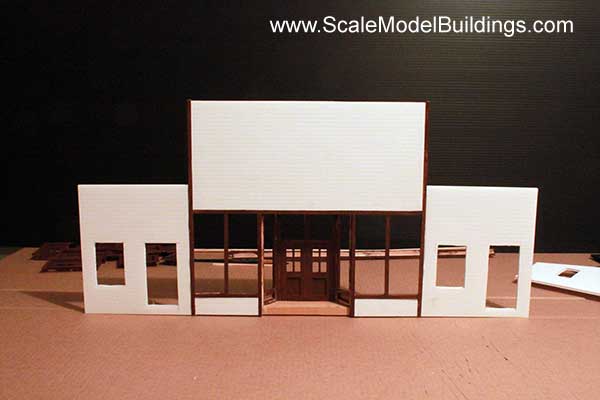 |
This is the assembled front wall of Watson's Store with the framed in place windows. |
|
|
|
 |
This is 4" Felt Sill-Plate Sealer. It is thicker than conventional tar-paper, will resemble roll-roofing, and should last for several years in the elements. One roll will do several structures, so works out to be an inexpensive roofing material for Garden Scale structures. |
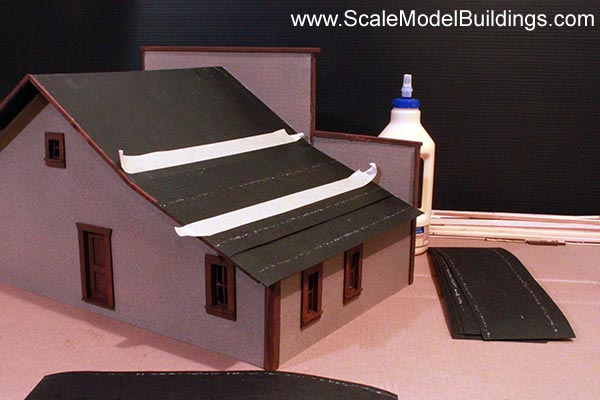 |
The roofing material is applied at an approximate 36" scale exposure, which will resemble conventional roll roofing. It is applied with an exterior grade carpenter's glue, but roof patch caulking could also be used. The masking tape is used to temporarily maintain alignment of each layer of roofing. |
 |
Any exposed edges of Coroplast can be hidden with 1/4" material. Coat the mating surface of the material with epoxy and fasten to the edge of the Coroplast. Make sure to allow for the extra width this will add to the overall dimension. |
 |
Some modellers leave the Coroplast unfinished. The corrugated panels can give the appearance of siding. This project was painted with RUST-OLEUM MultiColour Texture spray paint to resemble stucco. If you live in a windy area you might want to weight down the structure.
Previous
|
|
|
|
For N, HO, OO, O and other scales visit ScaleModelPlans.com ...
for our catalog of N Scale 1:160, HO Scale 1:87, OO Scale 1:76, and O Scale 1:48 plans, templates, and Cardstock patterns, then click to order the printable PDF files so you can get started on your next project. Modelling in Z, TT, or S scales? Click here
© 2023 T. Carson Contact Webmaster


